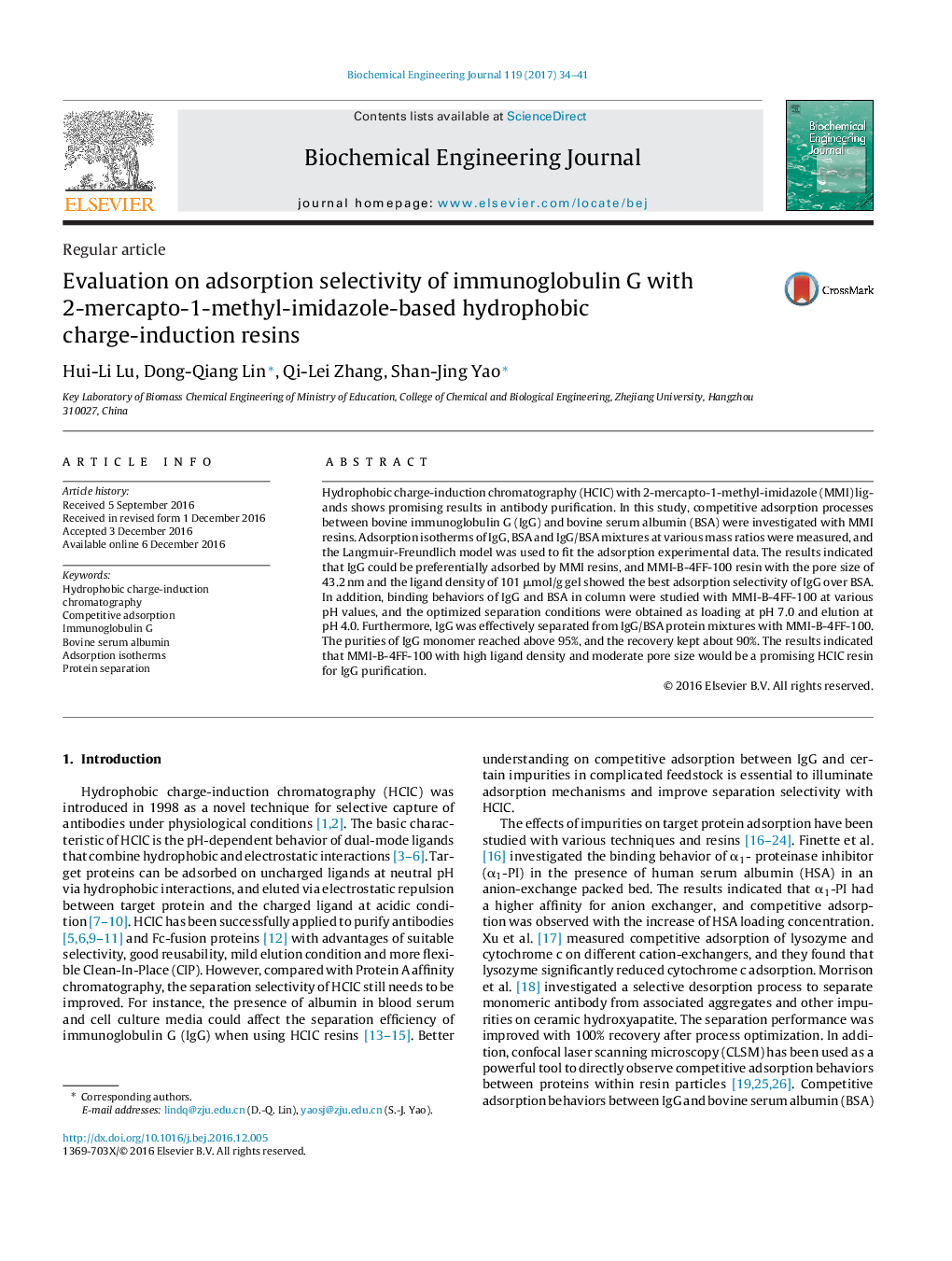| Article ID | Journal | Published Year | Pages | File Type |
|---|---|---|---|---|
| 6450414 | Biochemical Engineering Journal | 2017 | 8 Pages |
â¢2-Mercapto-1-methyl-imidazole-based hydrophobic charge-induction resins were evaluated.â¢Competitive adsorption behaviors between immunoglobulin G and bovine serum albumin were investigated.â¢Resins with moderate pore size and high ligand density exhibited the best adsorption selectivity.â¢Immunoglobulin G was preferentially adsorbed.â¢Immunoglobulin G was separated from protein mixtures effectively.
Hydrophobic charge-induction chromatography (HCIC) with 2-mercapto-1-methyl-imidazole (MMI) ligands shows promising results in antibody purification. In this study, competitive adsorption processes between bovine immunoglobulin G (IgG) and bovine serum albumin (BSA) were investigated with MMI resins. Adsorption isotherms of IgG, BSA and IgG/BSA mixtures at various mass ratios were measured, and the Langmuir-Freundlich model was used to fit the adsorption experimental data. The results indicated that IgG could be preferentially adsorbed by MMI resins, and MMI-B-4FF-100 resin with the pore size of 43.2 nm and the ligand density of 101 μmol/g gel showed the best adsorption selectivity of IgG over BSA. In addition, binding behaviors of IgG and BSA in column were studied with MMI-B-4FF-100 at various pH values, and the optimized separation conditions were obtained as loading at pH 7.0 and elution at pH 4.0. Furthermore, IgG was effectively separated from IgG/BSA protein mixtures with MMI-B-4FF-100. The purities of IgG monomer reached above 95%, and the recovery kept about 90%. The results indicated that MMI-B-4FF-100 with high ligand density and moderate pore size would be a promising HCIC resin for IgG purification.
